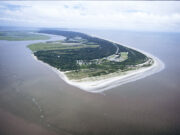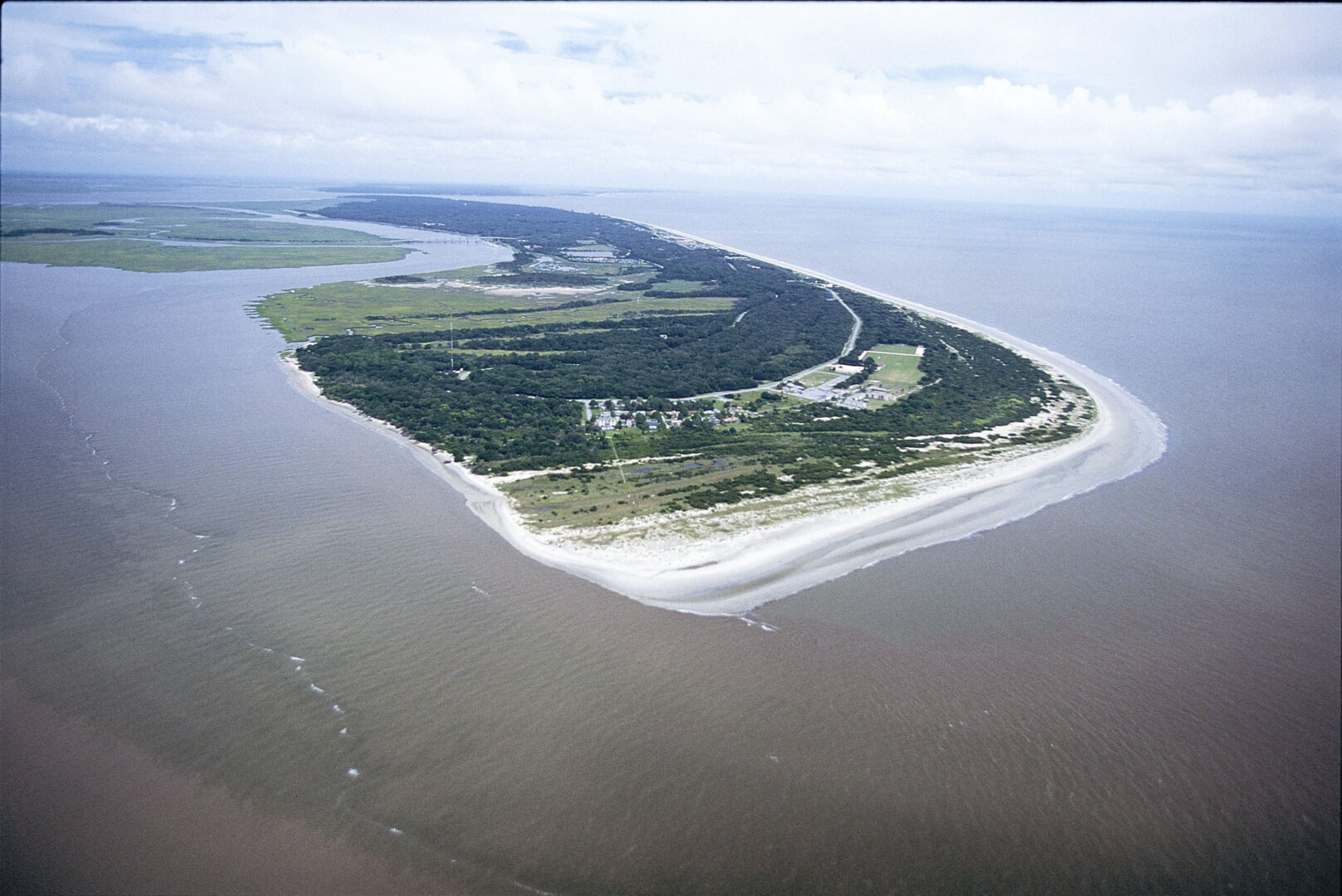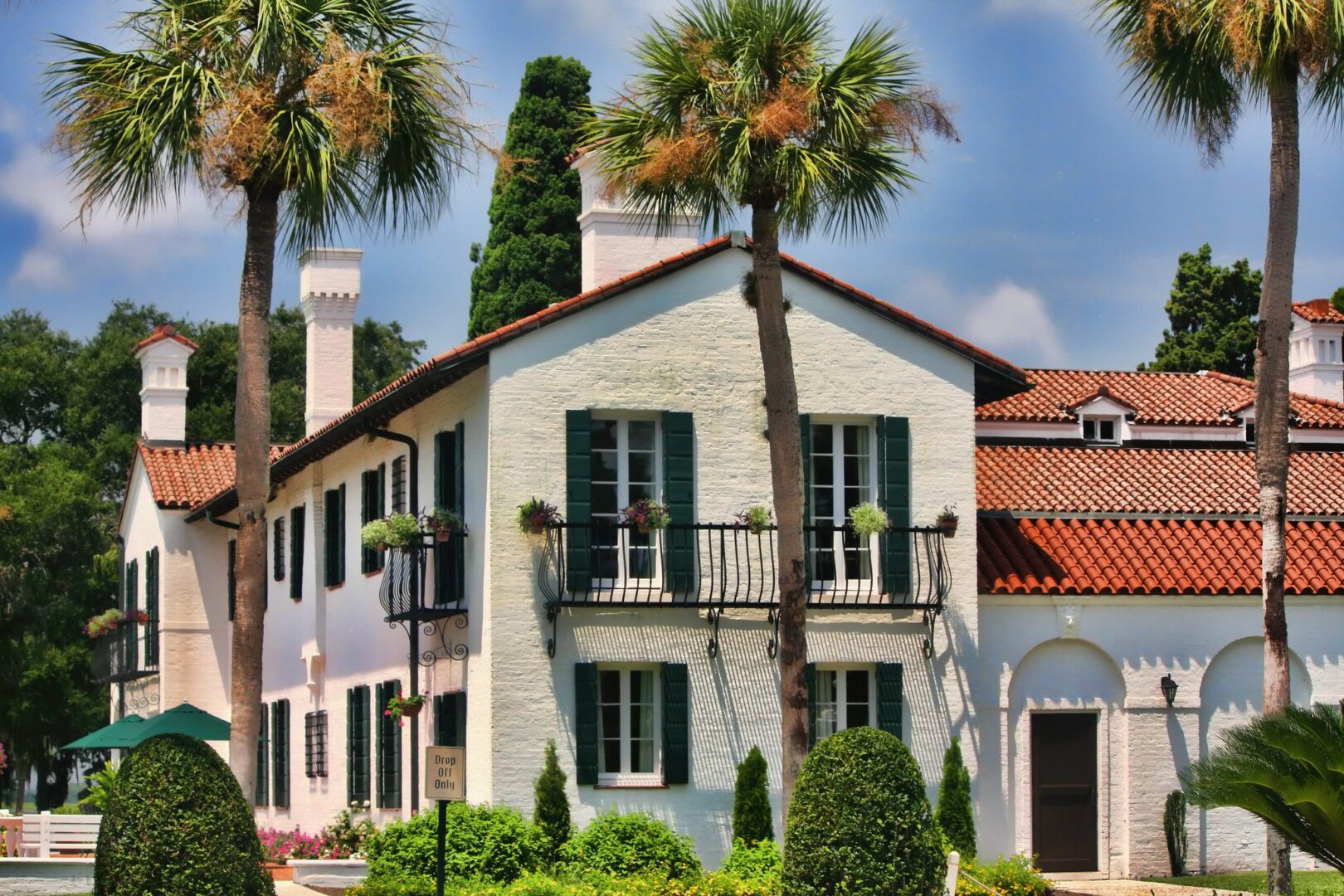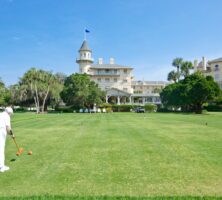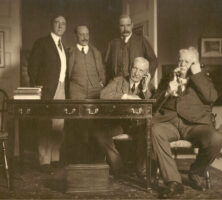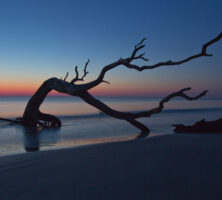Jekyll Island is located in Glynn County, just southeast of the city of Brunswick, south of St. Simons Island, and north of Cumberland Island. The 5,700-acre barrier island is fronted by Jekyll Creek and salt marsh on the western side and defined by its beach and the Atlantic Ocean on the eastern side.
The natural environment of Jekyll Island is a magnolia–live oak forest canopy with a forest floor dominated by palmetto and scrub oak. Mammals found on the island include white-tailed deer, raccoons, rabbits, and squirrels. The tidal creeks and streams of the salt marsh provide a variety of resources, including seasonal fish and shellfish.
History
Jekyll Island has a diverse and significant history. The first occupants of the island were probably small groups of Native American hunter-gatherers, sometime around 2,500 B.C., during the Archaic Period. These groups appear to have been composed of small family units that probably settled on Jekyll on a seasonal basis. They produced fiber-tempered pottery vessels and lived on the abundant natural resources of the area. Archaeological evidence suggests that Jekyll seems not to have supported a long-term permanent settlement by any aboriginal peoples, even though by 1000 B.C. Georgia’s coastal natives had begun to collect in settlements with less seasonal migration and larger population numbers. As Native American culture advanced, little changed on Jekyll Island.

Courtesy of Jekyll Island Museum
By A.D. 1540 the Georgia coast had become populated by the Guale Indians. The Guale extended from St. Catherines Island south to Jekyll Island, where they gave way to the Timucuan groups to the south. The first European occupation of Jekyll Island may have taken place during the late sixteenth century. During that period a chain of Spanish missions was established along the Georgia coast. The Spanish name for Jekyll was Isla de Ballenas, “Island of Whales,” because of the abundance of right whales off the island in the Gray’s Reef area. Although there is no evidence of the establishment of a mission on Jekyll Island, archaeological studies have shown a definable occupation by Native Americans during the period. There is strong archival evidence that the Spanish at least explored and had contact with native peoples on Jekyll during this period.
The year 1735 was a watershed moment for Jekyll Island. In 1733 James Oglethorpe and the passengers aboard the Anne had established the English colony of Georgia on Yamacraw Bluff, in present-day Savannah. The colony began to grow quickly, and an immediate conflict developed with the Spanish colony of Florida to the south. Feeling that the propriety and well-being of his colonists were being threatened, Oglethorpe began recruiting men from England to serve as soldiers in Georgia’s defense. William Horton was one of the men who believed this adventure would suit him. Horton sailed for Georgia with other recruits and arrived in Savannah in February 1736.
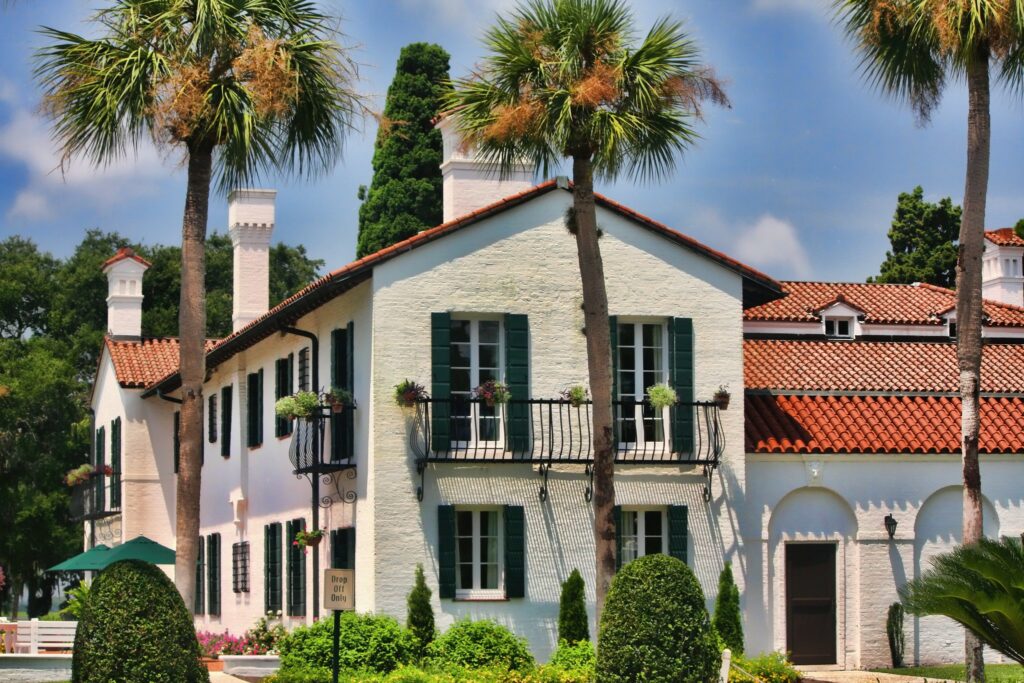
Image from Evangelio Gonzalez
Oglethorpe quickly dispatched Horton and thirty other recruits to St. Simons Island to construct the town and defenses at Frederica. Under the leadership of Oglethorpe, Frederica began to take form. Horton was a key player in these events and eventually was promoted to the rank of major and placed in command of the troops garrisoned in the area.
Horton was granted 500 acres of land by the Trustees of the colony, and in April 1736 he set out from Frederica to the neighboring island of Jekyll to stake his claim. Jekyll had been named in honor of Sir Joseph Jekyll, a supporter of Oglethorpe’s efforts to establish the colony of Georgia. By 1737 Horton had established residency on Jekyll and began raising cattle. He died in 1748; the remains of his house, built of tabby, are among the oldest structures in Georgia.
Over the next forty years, Jekyll had a number of owners, including Raymond Demere, Clement Martin, and Richard Leake. In 1792 it was purchased by the Sapelo Company, which was made up of four French landowners, among them Christophe Poulain DuBignon. By 1800 the island was completely owned by DuBignon. He and his descendants were the principal owners of the island until 1886, with agriculture as the primary activity on the island. Although the U.S. government had banned the importation of enslaved Africans in 1808, the smuggling of enslaved people continued. On November 29, 1858, during a storm, the Wanderer, owned by Savannah businessman Charles Lamar, unloaded its cargo of 409 captives on Jekyll. This was one of the last cargoes of African captives imported into the United States.
The Jekyll Island Club
John Eugene DuBignon and his brother-in-law Newton Finney were the early developers of the Jekyll Island Club. Between 1879 and 1885, the two men reacquired Jekyll with the idea of forming a hunting club for wealthy northerners. Finney lived in New York and had good connections to members of such institutions as the Union Club, and he developed the membership and early investors in the project. DuBignon handled the purchase of the island and in turn sold it to the newly incorporated Jekyll Island Club. Finney easily found fifty-three individuals willing to become members, among them Marshall Field, Henry Hyde, J. P. Morgan, Joseph Pulitzer, and William K. Vanderbilt.
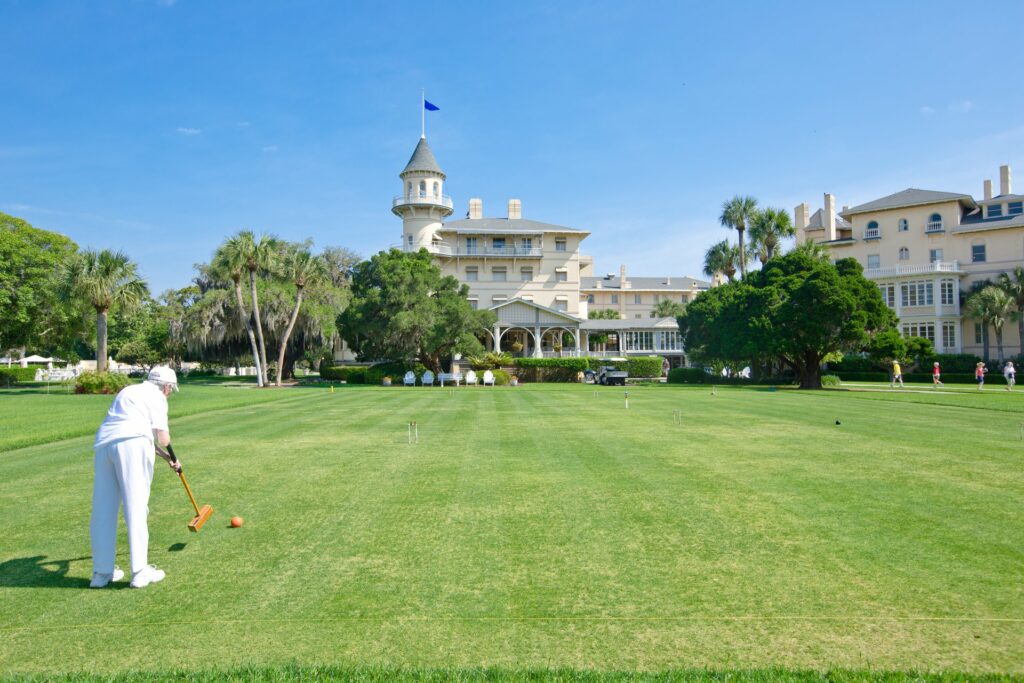
Courtesy of Explore Georgia.
In 1886 Finney, as a representative of the newly formed Jekyll Island Club, purchased the island from the DuBignons for $125,000. Ground was broken on the clubhouse building in mid-August 1886, and the club officially opened its doors in January 1888. Between 1888 and 1928, these wealthy northern industrialists built their winter homes, or “cottages,” as they called them. These cottages, which exemplify late Victorian architecture, have been restored and are open to the public.
Because of the concentration of internationally prominent business leaders, Jekyll Island has been the scene of some important historical events. AT&T president Theodore Vail placed the first transcontinental telephone call from Jekyll Island on January 25, 1915. Meetings that led to the development of the Federal Reserve System were held in secret on Jekyll in 1910 between members of what became known as the First Name Club.
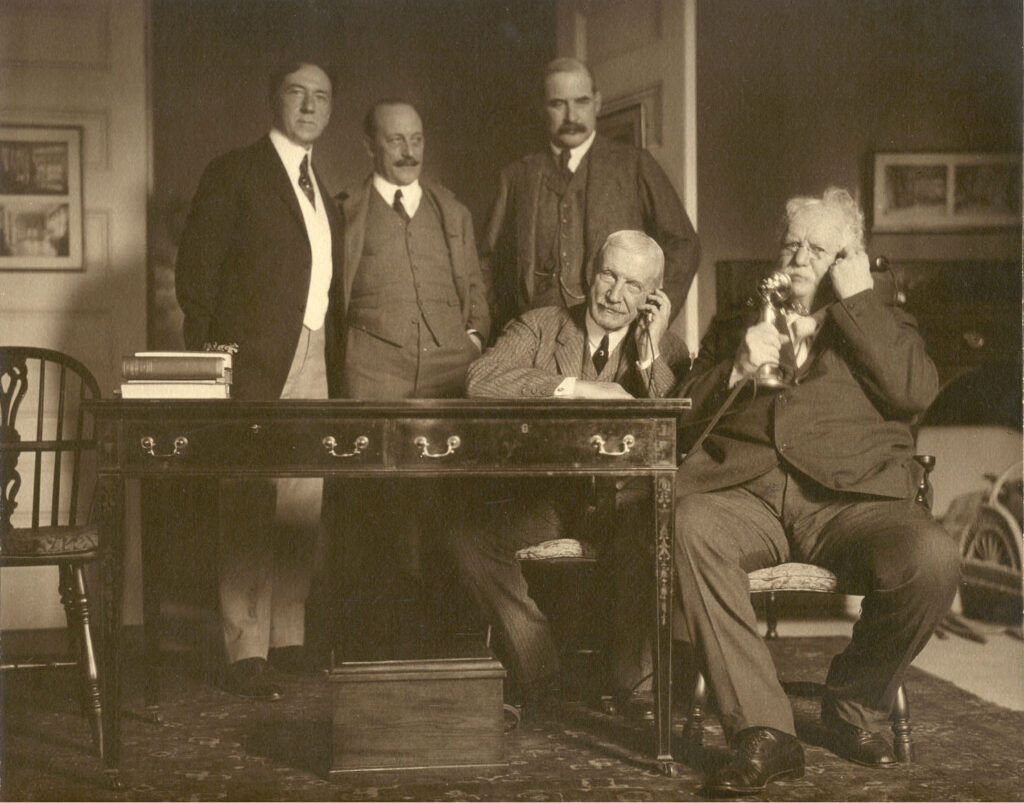
Courtesy of Jekyll Island Museum
The First Name Club comprised six major players in the Federal Reserve: U.S. senator Nelson Aldrich, A. Piatt Andrew (assistant secretary of the treasury and advisor to the National Monetary Commission), Henry P. Davison (partner in the firm of J. P. Morgan), Benjamin Strong (vice president of Banker’s Trust Company), Frank Vanderlip (president of National City Bank), and Paul Warburg (partner in the banking firm of Kuhn, Loeb, and Company). Using assumed names, the men made their way to Jekyll posing as duck hunters, then spent approximately a week developing what became known as the Aldrich Plan, which was proposed to Congress in 1912. Congress did not pass the plan, but U.S. president Woodrow Wilson and others used the Aldrich Plan as the basis for another plan that became the Federal Reserve Act and established the Federal Reserve System, creating a central banking system for the United States.
The Jekyll Island Club flourished into the 1930s, but the Great Depression began to change many people’s priorities. World War II (1941-45) was the final blow to the life of the Jekyll Island Club. It opened as usual for the 1942 season but closed early because of financial problems and the strain the war placed on the labor situation. The club’s president hoped to reopen the club after the war, but in 1946 Melvin E. Thompson, then serving as the state’s revenue commissioner, expressed interest in purchasing one of Georgia’s barrier islands and opening it to the public as a state park. Thompson became governor in 1947, and under his administration the state purchased the entirety of Jekyll Island on October 7, 1947, for $675,000 through a condemnation order.
Jekyll Island State Park
Since 1950 Jekyll has operated under the auspices of the Jekyll Island Authority. When the state of Georgia purchased Jekyll, it officially became the Jekyll Island State Park and was operated as part of the state parks system in 1948-49. Maintenance and operational costs were so great that the best way to operate the island was determined to be via a state-sponsored authority, so that the island could operate more like a business than as a department of state government. The state then chartered the Jekyll Island Authority for ninety-nine years (beginning in 1950) to manage the island on behalf of the state. The board of the Jekyll Island Authority is appointed by the governor.
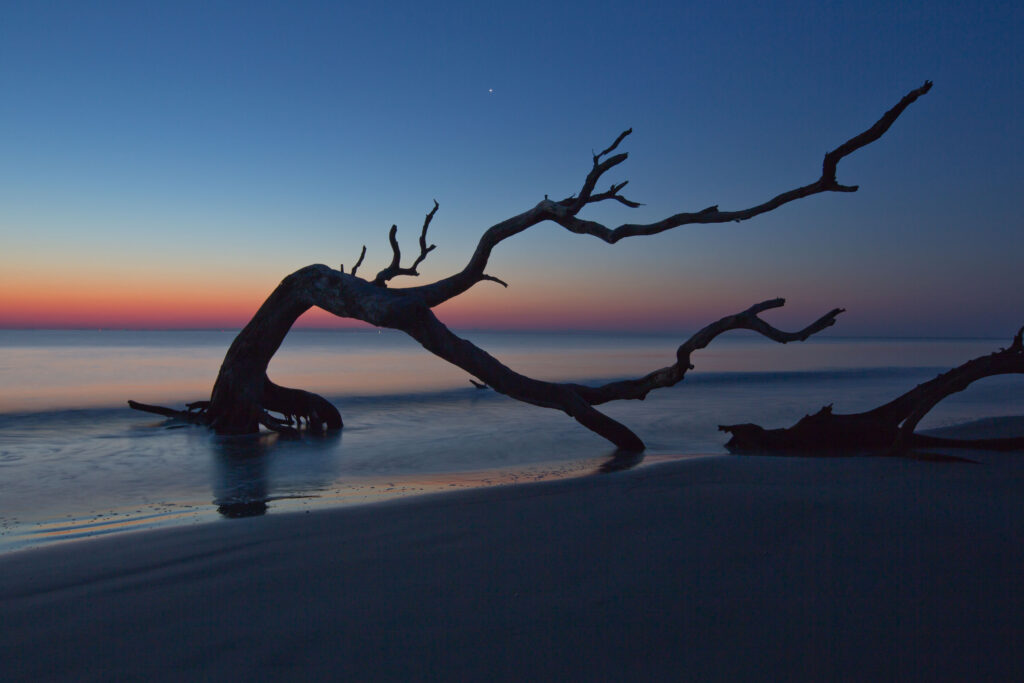
Courtesy of Explore Georgia.
The island has become renowned for the preservation of its natural and historic resources, and it provides public access to thousands of visitors annually. In 1972 the Jekyll Island Historic District was listed on the National Register of Historic Places, and in 1978 it was elevated to National Historic Landmark status. In 2002 archaeologists began to excavate the Horton House site, looking for evidence of other structures and artifacts.
The Georgia Sea Turtle Center, which opened on Jekyll Island in 2007, offers daily tours to students and visitors. The center conducts research about and provides veterinary care to the state’s endangered sea turtle population.


